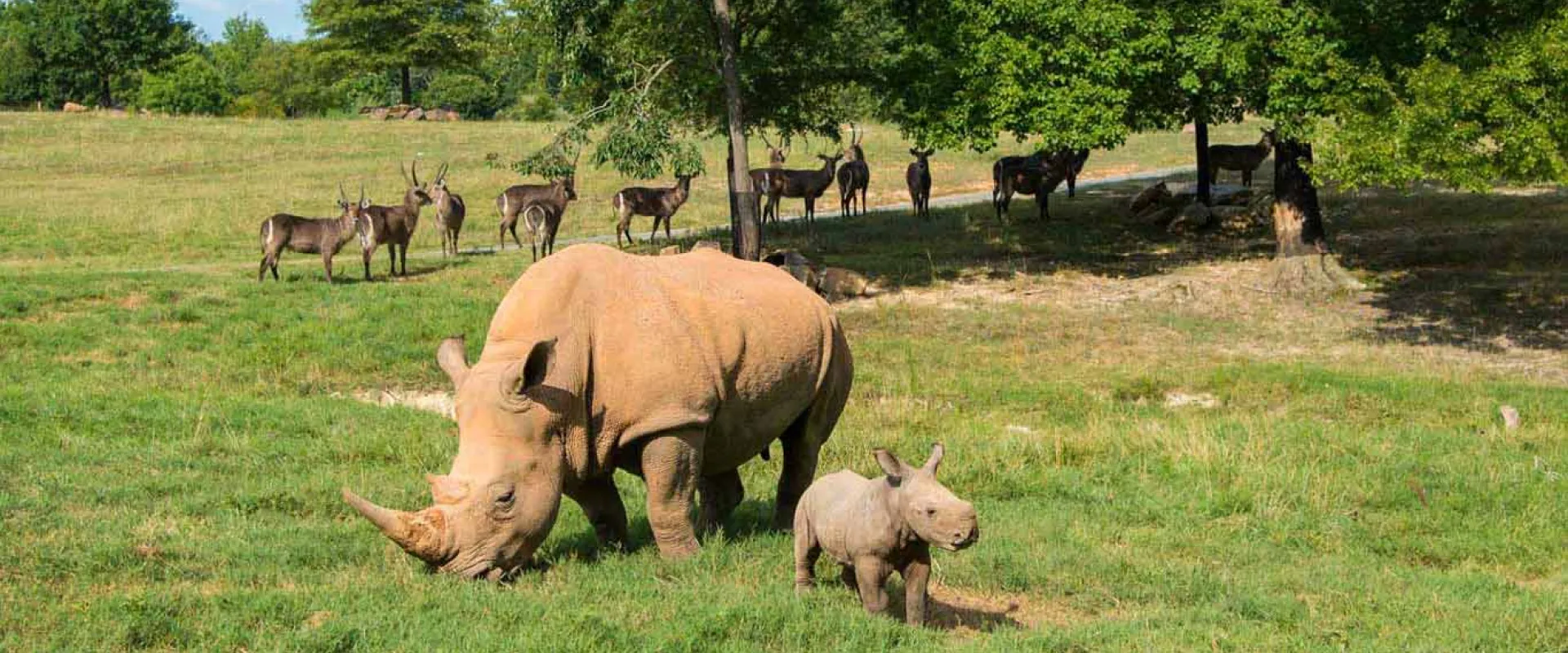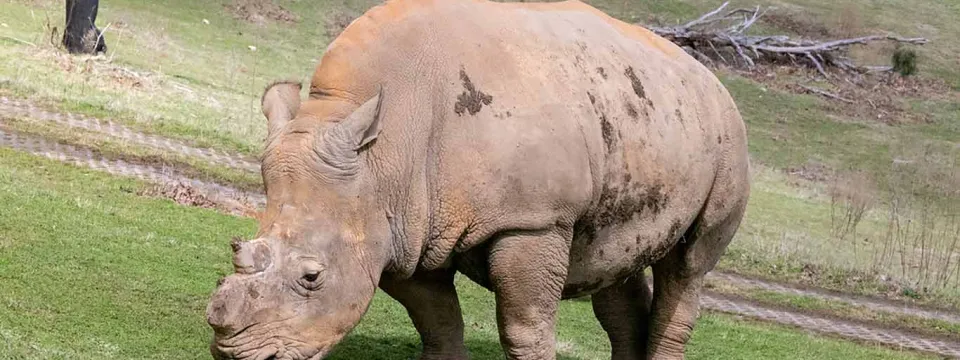Author: Rich Bergl, Director of Conservation, Education and Science
While I have always been interested in wildlife and nature, my passion for conservation was ignited almost 30 years ago when I was a gorilla keeper at Brookfield Zoo in Chicago. Images published in magazines like National Geographic of wild animals that had been hunted for their meat or other body parts motivated me to want to do something to help. This led me to pursue a PhD studying gorillas in the wild and eventually a career working to save wildlife. I am proud that the North Carolina Zoo is a leader among zoos in terms of our efforts to prevent the extinction of species like lions, gorillas, elephants, vultures and rhinos.
Here at the North Carolina Zoo, rhinos are thriving. The most recent birth of Jojo marks the fourth Southern white rhino born at the Zoo in just a few years. Our growing rhino family spends its days not worrying about much, other than which patch of shade or mud wallow to spend the afternoon in.
Unfortunately, the same can’t be said for their wild rhino cousins. Rhino populations in Africa and Asia have been hard hit by an explosion of poaching in recent years. Over the last ten years, an average of 1,000 rhinos a year have been poached annually across Africa. Only about 5,000 black rhinos remain in the wild and the species is classified as Critically Endangered. Several subspecies of both black and white rhinos have already gone extinct.
Rhino poaching is driven by demand for their horns, largely for use in Asian traditional medicine. Even though rhino horn is made up of keratin (the same material as your fingernails) and has no documented medicinal properties, it is still widely sought after for use in everything from hangover cures to cancer treatments. Demand is so strong that rhino horn fetches a higher price than gold on the black market.
One of the things the Zoo’s conservation program is good at is coming up with clever solutions to conservation problems. Often this involves applying new technology to address a challenge. Zoo staff have played a leadership role in developing SMART technology to improve conservation in protected areas around the world (check out other blog posts for more information on SMART and take a look at smartconservationtools.org), and we have helped apply this system to protect rhinos in multiple places across Africa.
Namibia is one of the driest countries in the world, and when I first went there about five years ago, was a stark contrast to the rainforests of west Africa where I had studied gorillas. Large portions of the country are covered in immense sand dunes and an entire year can pass without a drop of rain. Despite its arid climate, Namibia is home to the world’s single largest population of black rhinos. In the Etosha National Park, the zoo has trained dozens of rangers how to use smartphones to collect information about their anti-poaching patrols. This allows data from across the entire park (which is half the size of Connecticut) to be used to plan future patrols to protect wildlife in general and rhinos in particular.
The Zoo also helped set up a system to better count Etosha’s rhino population. The same system used for ranger patrols is now being used during the annual aerial count of the park’s rhinos. When I was in Etosha a few years ago setting up the system I was lucky enough to be able to join the rhino census team on helicopter flights over the park to test the system. During a three-hour flight we saw more rhinos than I had seen in my whole life up to that point! Flying over the park really demonstrated to me how important Etosha is for the future of wild rhinos and I am glad that the North Carolina Zoo is helping to secure that future.


